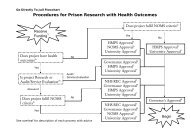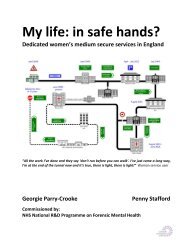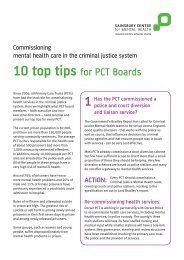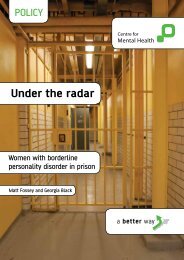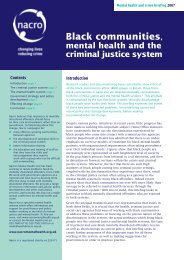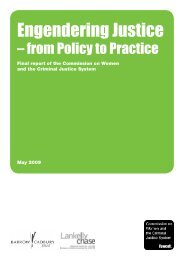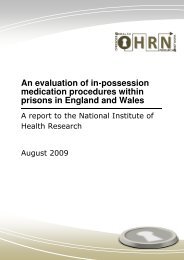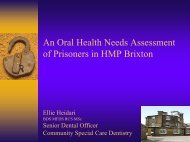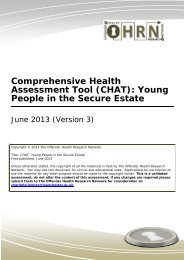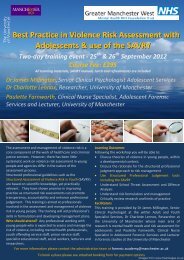Physical Control in Care Training Manual - Independent Advisory ...
Physical Control in Care Training Manual - Independent Advisory ...
Physical Control in Care Training Manual - Independent Advisory ...
You also want an ePaper? Increase the reach of your titles
YUMPU automatically turns print PDFs into web optimized ePapers that Google loves.
PHYSICAL CONTROL IN CARERestra<strong>in</strong>ts where the subject is seated require particular caution,s<strong>in</strong>ce the angle between the chest and the lower limbs is alreadydecreased. Compression of the torso aga<strong>in</strong>st or towards the thighsrestricts the diaphragm and further compromises lung <strong>in</strong>flation. Thisalso applies to prone restra<strong>in</strong>ts, where the body weight of the<strong>in</strong>dividual, and restra<strong>in</strong><strong>in</strong>g staff, can act to restrict the chest wall andthe abdomen. 5Subjects who are obese are particularly vulnerable when placed <strong>in</strong>either the prone position or are seated with their stomach pushedforward toward their legs. These positions restrict the diaphragm andcan lead to difficulties <strong>in</strong> breath<strong>in</strong>g.The use of restra<strong>in</strong>t holds around the neck may be very effective andtherefore tempt<strong>in</strong>g to staff <strong>in</strong> serious situations. However, they have along history of caus<strong>in</strong>g sudden death dur<strong>in</strong>g restra<strong>in</strong>t. 6 Thereforerestra<strong>in</strong>t holds around the neck must not be used.Risk factors for restra<strong>in</strong>t asphyxiaAny factors that <strong>in</strong>crease the body’s oxygen requirements ordecrease the ability to breathe will <strong>in</strong>crease the risk of restra<strong>in</strong>tasphyxia. A list of identified risk factors 7 is given below:• Prolonged restra<strong>in</strong>t, where the person violently resists foran extended period of time. (This has been identified as thes<strong>in</strong>gle greatest risk factor)• Obesity• Restriction of or pressure to the neck, chest and abdomen• Restra<strong>in</strong>t of an <strong>in</strong>dividual of small stature• Any underly<strong>in</strong>g respiratory disease (e.g. asthma)• Alcohol, or drug <strong>in</strong>toxication (alcohol and several other drugscan affect the bra<strong>in</strong>’s control of breath<strong>in</strong>g). Alcohol is associatedwith death at high levels, through alcoholic poison<strong>in</strong>g.5 Parkes, J. & Carson, R. (2008) ‘Sudden Death Dur<strong>in</strong>g Restra<strong>in</strong>t: Do Some Positions Affect LungFunction.’ Medic<strong>in</strong>e, Science and the Law 48(2) 137-416 Reay, D.T., Eisele, J.W. (1982) 'Death from Law Enforcement Neck Holds.' The AmericanJournal of Forensic Medic<strong>in</strong>e and Pathology. 3(3) 253-8.7 Stratton, S.J., Rogers, C., Brickett, K., Gruz<strong>in</strong>ski, G. (2001) 'Factors associated with suddendeath of <strong>in</strong>dividuals requir<strong>in</strong>g restra<strong>in</strong>t for excited delirium.' American Journal Of EmergencyMedic<strong>in</strong>e 19(3): 187-91© National Offender Management Service National Tactical Response GroupJuly 201032



